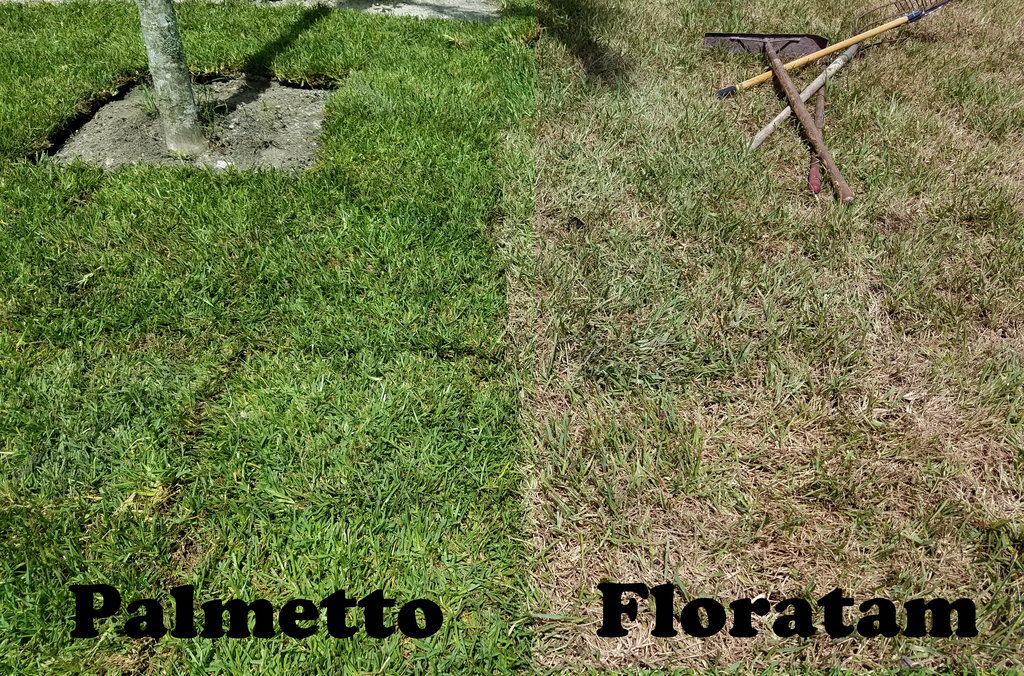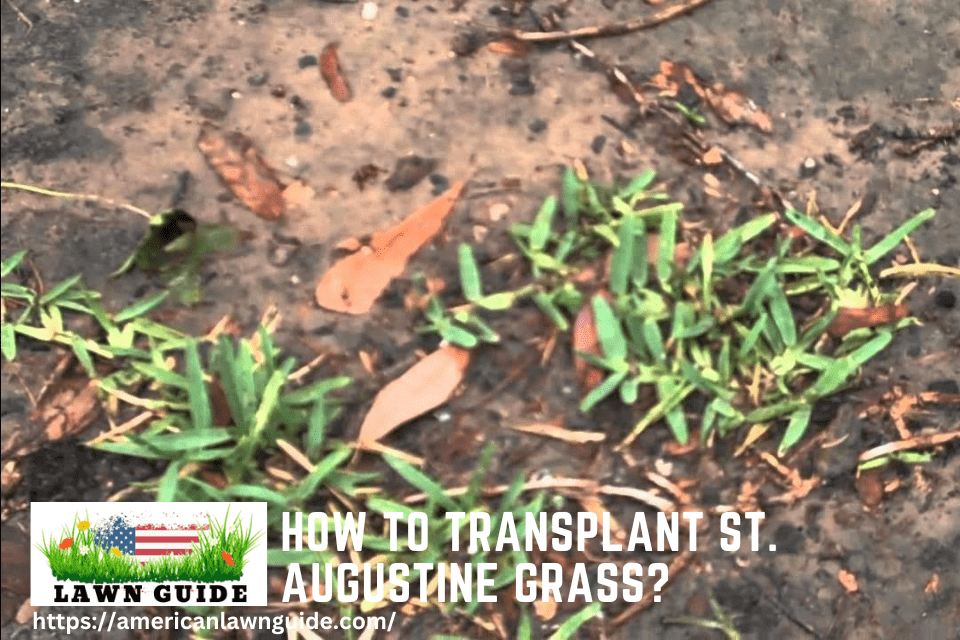To transplant St. Augustine grass, cut sod pieces from a healthy lawn and plant them in prepared soil. Water the new sod thoroughly.
Transplanting St. Augustine grass can rejuvenate your lawn and fill in bare spots. This warm-season grass thrives in southern climates and requires specific care for successful transplantation. Choose a healthy patch of grass as your sod source. Prepare the new area by removing weeds and loosening the soil.
Cutting the sod into manageable pieces ensures easier planting. After positioning the sod, water it immediately and keep it moist until it establishes roots. Proper care during the initial weeks is crucial for successful growth. This method helps maintain a lush, green lawn with minimal effort. Regular maintenance after transplanting ensures long-lasting results.

Introduction To St. Augustine Grass
St. Augustine Grass is a popular choice for lush lawns. It’s known for its dense and green appearance. This grass type is commonly used in warm climates. It thrives in coastal areas and southern states.
Characteristics
St. Augustine Grass has a unique texture. It features broad, flat blades. This grass spreads through stolons, also known as runners. Its thick growth helps choke out weeds. St. Augustine Grass is known for its shade tolerance.
Ideal Growing Conditions
St. Augustine Grass prefers warm temperatures. It grows best in USDA zones 8 to 10. This grass requires full sun but can tolerate some shade. It needs well-draining soil. St. Augustine Grass benefits from regular watering. It’s also important to fertilize it during the growing season.
| Aspect | Details |
|---|---|
| Temperature | Warm climates, USDA zones 8-10 |
| Sunlight | Full sun to partial shade |
| Soil | Well-draining |
| Watering | Regular, consistent |
| Fertilization | During growing season |
Preparing For Transplantation
Preparing for transplantation is a crucial step in ensuring your St. Augustine grass thrives in its new location. This process involves careful planning and attention to detail to give the grass the best chance of success.
Selecting The Right Time
Choosing the right time to transplant St. Augustine grass is vital. The best period is during the growing season, typically in spring or early summer. This timing allows the grass to establish roots before facing extreme temperatures.
Transplanting during this period reduces stress on the grass. It also ensures rapid root growth and better adaptation to the new environment.
Soil Preparation
Proper soil preparation is key to successful transplantation. Start by testing the soil’s pH level. St. Augustine grass prefers a pH between 6.0 and 7.5.
Follow these steps to prepare the soil:
- Remove debris: Clear rocks, sticks, and old grass from the area.
- Till the soil: Loosen the soil to a depth of 6-8 inches.
- Add compost: Mix in organic compost to improve soil structure.
- Level the surface: Ensure the soil is even and smooth.
Proper soil preparation ensures better root penetration and nutrient absorption.
Below is a table summarizing the soil preparation steps:
| Step | Description |
|---|---|
| Remove debris | Clear rocks, sticks, and old grass |
| Till the soil | Loosen to a depth of 6-8 inches |
| Add compost | Mix in organic compost |
| Level the surface | Ensure soil is even and smooth |
Following these steps will set a strong foundation for your transplanted St. Augustine grass.
Transplanting Step-by-step
Transplanting St. Augustine grass can rejuvenate your lawn. Follow these easy steps to ensure successful grass transplantation.
Cutting Sod Pieces
Start by cutting the sod into manageable pieces. Use a sharp spade or sod cutter for clean cuts. Each piece should be about 12 inches square.
Make sure the sod pieces have about 2 inches of soil attached. This helps the roots stay intact. Stack the cut sod pieces carefully.
Laying Sod In The New Location
Prepare the new location by removing any debris. Loosen the soil using a rake. Place each sod piece firmly on the prepared soil.
Align the edges of the sod pieces closely. This prevents gaps where weeds can grow. Gently press down on the sod to ensure contact with the soil.
Watering And Initial Care
Water the newly laid sod immediately after transplanting. Ensure the soil is moist but not waterlogged. Water daily for the first two weeks.
Check the sod regularly to ensure it’s taking root. Avoid heavy foot traffic on the new sod for at least a month. Apply a balanced fertilizer after three weeks to promote growth.
Post-transplant Care
After transplanting St. Augustine grass, proper care ensures healthy growth. Follow these steps for a lush, green lawn.
Watering Schedule
Watering is crucial for newly transplanted St. Augustine grass. Water the grass immediately after transplanting. Keep the soil moist but not waterlogged.
Follow this watering schedule:
- First Week: Water daily for 10-15 minutes.
- Second Week: Water every other day for 15-20 minutes.
- Third Week: Water twice a week for 20-25 minutes.
After three weeks, water once a week. Ensure deep watering to promote root growth.
Fertilization
Fertilize the grass to provide essential nutrients. Use a balanced, slow-release fertilizer.
Apply fertilizer two weeks after transplanting. Follow these steps:
- Choose a fertilizer with equal parts nitrogen, phosphorus, and potassium.
- Apply according to the package instructions.
- Water the grass after applying fertilizer.
Repeat fertilization every 6-8 weeks during the growing season.
Mowing And Maintenance
Proper mowing keeps your St. Augustine grass healthy. Wait until the grass is established before mowing.
Follow these mowing guidelines:
- Mow when the grass reaches 3-4 inches in height.
- Set the mower blade to 2.5-3 inches.
- Never cut more than one-third of the grass height at once.
Regular maintenance includes checking for pests and diseases. Remove weeds promptly to prevent competition for nutrients.

Frequently Asked Questions
What Is The Best Time To Transplant St. Augustine Grass?
Early spring or late summer are ideal times for transplanting St. Augustine grass.
How Do You Prepare Soil For Transplanting?
Loosen the soil and remove weeds. Add compost for better nutrient content.
Can St. Augustine Grass Be Transplanted In The Shade?
Yes, but it requires at least 4-6 hours of sunlight daily for optimal growth.
How Often Should You Water Transplanted Grass?
Water daily for the first two weeks to establish roots, then gradually reduce frequency.
Conclusion
Transplanting St. Augustine grass can revitalize your lawn. Follow the steps outlined for a smooth process. Proper care and patience will ensure healthy growth. Remember to water regularly and monitor for pests. With these tips, your lawn will soon look lush and green.
Enjoy your beautiful St. Augustine grass!
{ “@context”: “https://schema.org”, “@type”: “FAQPage”, “mainEntity”: [ { “@type”: “Question”, “name”: “What is the best time to transplant St. Augustine grass?”, “acceptedAnswer”: { “@type”: “Answer”, “text”: “Early spring or late summer are ideal times for transplanting St. Augustine grass.” } } , { “@type”: “Question”, “name”: “How do you prepare soil for transplanting?”, “acceptedAnswer”: { “@type”: “Answer”, “text”: “Loosen the soil and remove weeds. Add compost for better nutrient content.” } } , { “@type”: “Question”, “name”: “Can St. Augustine grass be transplanted in the shade?”, “acceptedAnswer”: { “@type”: “Answer”, “text”: “Yes, but it requires at least 4-6 hours of sunlight daily for optimal growth.” } } , { “@type”: “Question”, “name”: “How often should you water transplanted grass?”, “acceptedAnswer”: { “@type”: “Answer”, “text”: “Water daily for the first two weeks to establish roots, then gradually reduce frequency.” } } ] }



